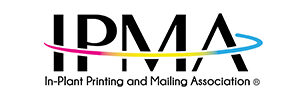Part of IPMA’s Surviving the Pandemic Blog Series
This is the fourth and final article based on the McKinsey white paper entitled “From Surviving to Thriving: Reimagining the Post-COVID-19 Return”. In the first article, we discussed recovering revenue, the second rebuilding the organization, the third rethinking the organization, and in this article, we will discuss accelerating digital adoption.
The printing industry has been going through a digital revolution for decades. It started with the desktop publishing revolution and evolved into digital printing, digital proofing, and computer to plate imaging. Yet despite the piecemeal implementation of digital workflows, there is still a silo approach, a lack of features and integration, which results in a lack of synergy. This slow and restricted adoption of digital technology hurts productivity and creates costly bottlenecks and quality control issues.
Some define digital adoption as part of a paperless strategy. That is not the definition used in this article. Here, digital adoption refers to the increasing adoption of digital technologies to increase productivity and focuses on 4 tools: web to print, Prepress PDF software, automated data collection integrated into Print MIS software, and sales automation.
Web to Print
Web to print offers the greatest benefits because it reduces the time to create estimates, create job tickets, preflight files, and perform billing. But the vast majority of in-plants are not taking advantage of all those features.
Prepress PDF software
Preflight and repair is frequently missing from in-plant workflows even though they are available both in web to print and prepress PDF software. One commercial company I worked with had implemented the preflight feature in their prepress PDF software. As a result, customers would automatically receive a preflight email that showed them what the file looked like and pointed out how they had fixed the file (i.e. The software created a bounding box for a pdf file).
Automated Data Collection
A recent report from Keypoint Intelligence InfoTrends found that 46% of in-plants manually track operational performance (2020 North American Software Investment Outlook Survey). This lack of automated data collection is a significant factor in the limited adoption of digital technology and creates challenges in trying to manage and improve performance.
Data collection is a critical component for reporting and improvement. When data collection is manual, you can create management reports, but it is difficult to show continuous process improvement. The industry has tried several times to automate data collection but failed. The first attempt was using keypads throughout production. This often took more time to input data than perform the task.
A second attempt tried to integrate data collection into the machine counters. This had some limited success, but often included an expensive setup. The latest attempt is bar code readers tied to the Print MIS. It is proving to have the greatest success. It is fast and easy to input information with a bar code reader as it goes through each step of the process. The only problem is that not all Print MIS systems can integrate with bar code readers.
Sales automation
Just as “sales” can be a dirty word or controversial subject within in-plants, so is sales software or customer relationship management (CRM) software. The features of CRM software are unclear too. For example, some but not all provide email functionality, social media help and calendars.
To make things more complicated, the role or tasks of CRM software is also controversial. The only aspect of CRM software that is not controversial is the market leader which is Salesforce. However, for those in-plants involved in sales, there are advantages to automating some of these functions such as creating a database of customers and prospects, monitoring lead generation and lead nurturing, working a calendar to schedule calls or emails, etc. Not everyone can cost justify these software tools. If you can’t justify the investment, many of these features can be done with a do-it yourself approach using spreadsheets and calendar software.
Wondering where to start? Bottlenecks
If you’re not sure where to focus your attention to accelerate your adoption of digital technology, you can always focus on your bottlenecks. Bottlenecks are the greatest challenge in a linear workflow (a workflow in which each step has to be completed to move to the next step) such as a print production. The easiest way to identify the magnitude of your bottlenecks is to look at the amount of WIP or Work in Progress at each step. Where the pile of work in progress is highest, that is your greatest bottleneck and should be the focus of your improvement efforts.
In simple terms, if your bottleneck is in estimating, customer service, or billing, consider a web to print tool. If you bottleneck is in prepress, consider prepress PDF software. If you are skeptical of your numbers (estimating, pricing, productivity), consider adding bar code tracking to your Print MIS systems to get more accurate numbers.

© Howie Fenton Consulting

Howie Fenton is a friend to IPMA members. He is an independent consultant and trusted advisor to in-plant service providers. He helps in-plants measure and improve performance. He is always willing to talk to IPMA members at no cost and offers discounts to IPMA members for any work. For more information, call Howie at 720 872-6339 or visit HowieFentonConsulting.com.
